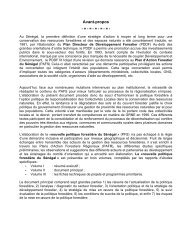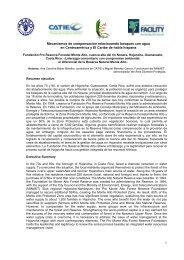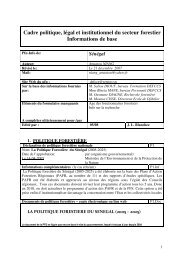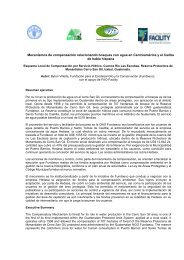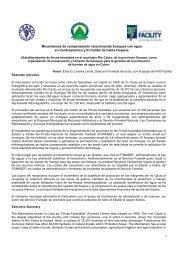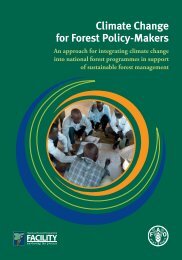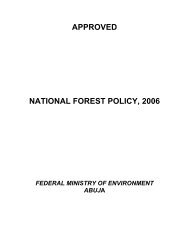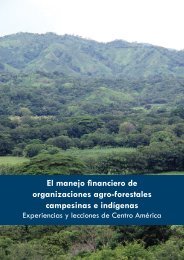2010 Progress Report â Draft - NFP Facility
2010 Progress Report â Draft - NFP Facility
2010 Progress Report â Draft - NFP Facility
Create successful ePaper yourself
Turn your PDF publications into a flip-book with our unique Google optimized e-Paper software.
<strong>2010</strong> <strong>Progress</strong> <strong>Report</strong>provided the rather slow countries with information on neighbouring countries where the process is movingfaster. That has created much needed stimulation in several countries. In addition, the <strong>Facility</strong> has organiseda number of Regional events around participation, conflict resolution and financing, which have attractedparticipants from most partner countries, including the dormant and slow ones, and this has stimulated somecountries to give their nfp more priority.The <strong>Facility</strong> administration has accumulated good experience in handling the small grants in an efficient way.The database, FORIS, is helping the process enormously as no time is lost to monitoring the differentpayments linked to the signing of the contract or reports and other outputs. In cases where the Recipientorganisation was not able to open a bank account, or for other reasons, the <strong>Facility</strong> can finance the activitythrough the FAO Representation.Table 2: Small grants since 2002 and established in <strong>2010</strong>2002-<strong>2010</strong> <strong>2010</strong>RegionNumberofgrantsTotalamount(US$)Totalamount (%)Number ofgrantsTotal amount(US$)Totalamount(%)Africa 319 6,505,085 41% 84 1,599,450 46%Asia Pacific 95 2,441,515 15% 18 456,080 13%LatinAmericaand Caribbean 224 5,483,305 34% 42 1,309,586 38%Near East 1 7,500 0% 0 0 0%WesternandCentral Asia 25 435,800 3% 0 0 0%Regionalorganisations 19 1,146,990 7% 2 120,000 3%Grand total 683 16,020,195 100% 146 3,485,116 100%From the point of view of distribution of the funds, it is clear from Table 2 above that Africa received, in <strong>2010</strong>,almost half of funds, followed by Latin America and the Caribbean (38%). As in the past, in Asia-Pacific, the<strong>Facility</strong> country support is far less than in other regions, despite effective coaching. The reason is that AsianCountries usually have much more donor support for the Forestry sector and thus the <strong>Facility</strong> with itsprocedure of open calls for proposals and transparent process is getting less priority by the national forestryagencies. Some Asian countries also have a problem with capacity to organise their nfp (language, cultural,strong hierarchic administration). In the Pacific sub-region, the three partnerships are dormant basically dueto lack of coaching capacity.Grant beneficiariesSince the start in 2002, about 70% of the grants have been established in support of civil societyorganizations and 30% were signed with National Forestry Agencies (for coordination of the nfp process) andother Government Agencies (such as Research and Decentralised Forestry offices). Private sector associationshave received only 6% of the funds.In <strong>2010</strong>, the <strong>Facility</strong> mainly supported NGOs, some 60% of the funds, followed by Central Forestry Authorities(CFA). See graph on the next page.13



